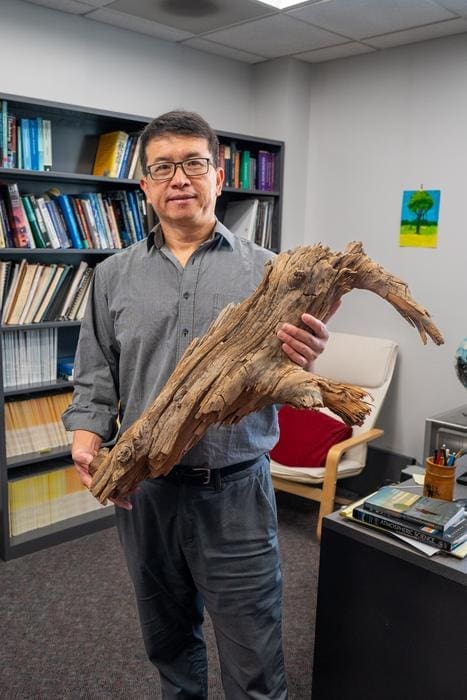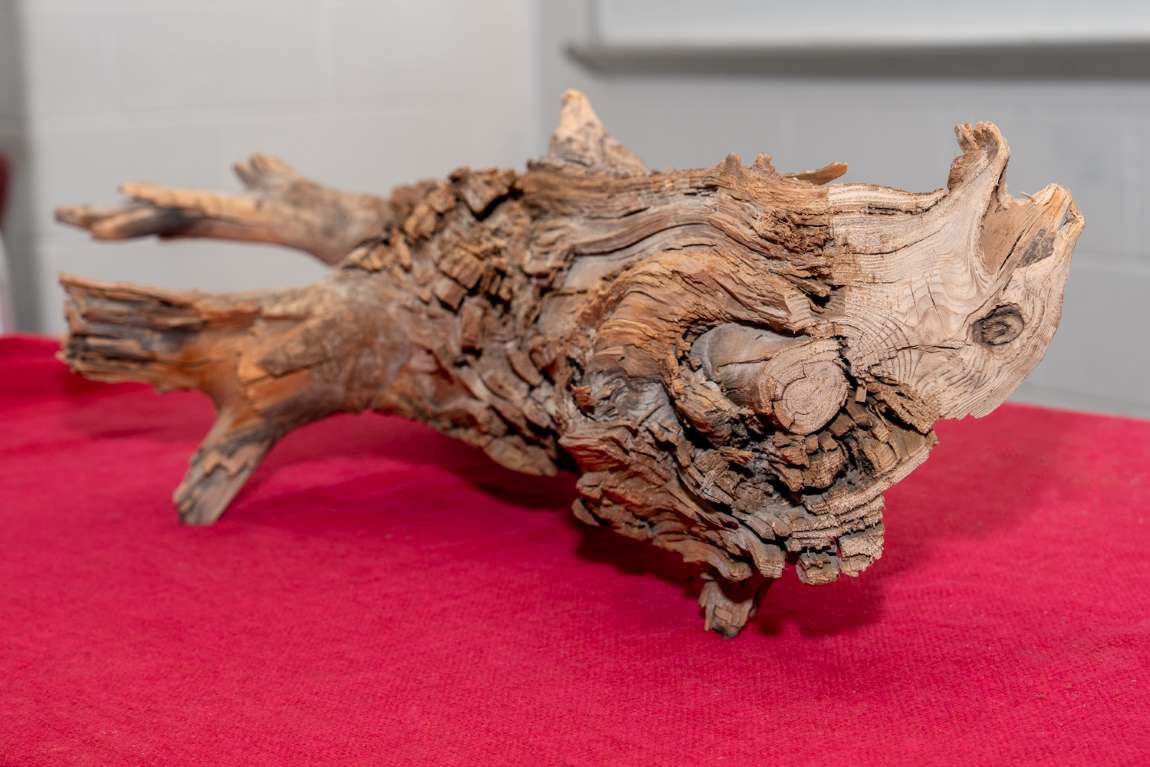A newly published study in Science reveals how a 3,775-year-old log could help refine a novel approach to combating climate change.
The research, led by University of Maryland (UMD) Professor Ning Zeng, highlights how burying wood in specific environmental conditions might prevent its decomposition and stop the release of carbon dioxide – a key contributor to global warming.

The study centers on a log, discovered in Quebec, Canada, during a pilot project in 2013. Zeng and his team were exploring “wood vaulting,” an emerging strategy that involves burying wood from damaged trees or unused materials to stop their natural decay. When wood decomposes, it releases the carbon dioxide it has absorbed during its lifespan back into the atmosphere. By halting this process, Zeng and his team believe that wood vaulting could become an effective climate solution.
The log in question, an Eastern red cedar, was found about 6.5 feet (n.e. around 198 cm) below the surface in clay-rich soil. Zeng was stunned by how well-preserved the wood was.
“The wood is nice and solid – you could probably make a piece of furniture out of it,” he said, adding that the log had only lost about 5% of its carbon dioxide over the millennia.
What kept the log in such pristine condition? The answer lies in the clay soil that surrounded it. The soil had low permeability, limiting the amount of oxygen that could reach the wood. Decomposers like fungi and insects, which accelerate the breakdown of organic matter, were also unable to penetrate the soil barrier. As a result, the log remained intact for nearly four millennia.
This discovery provides key insights into how wood can be preserved long-term, potentially informing how wood vaulting projects are carried out globally.
“People tend to think, ‘Who doesn’t know how to dig a hole and bury some wood?’” Zeng remarked. “But think about how many wooden coffins were buried in human history. How many of them survived?”
While previous research has examined ancient preserved wood, those studies focused on the wood itself, overlooking the crucial role of the surrounding soil. Zeng’s study is groundbreaking because it combines an analysis of both the wood and its environment. This combined approach offers clues about how to engineer wood vaults to maximize carbon retention.
To ensure the log’s age and composition, Zeng worked with UMD collaborators and researchers at Montreal’s MAPAQ government ministry. Through carbon dating and microscopic analysis, the team confirmed that the log had lost very little carbon over its long burial. They compared it to freshly cut Eastern red cedar and found that despite its age, the old log had retained much of its density, strength, and carbon content.
This new evidence supports the idea that clay soils could be key to making wood vaulting a viable climate solution. As clay soils are abundant in many parts of the world, wood vaulting could be a low-cost, practical method to sequester carbon.
However, Zeng cautions that wood vaulting should not be viewed as a standalone solution to climate change. It is best used in conjunction with other efforts, such as reducing greenhouse gas emissions.
“The urgency of climate change has become such a prominent issue,” he said. “There was even more motivation to get this analysis going.”
For Zeng, the discovery of the ancient log during the Quebec dig was nothing short of miraculous. It has opened up new avenues for refining wood vaulting as a tool to curb climate change, showing that with the right techniques, buried wood can retain carbon for thousands of years.
Journal Reference:
Ning Zeng et al. ‘3775-year-old wood burial supports “wood vaulting” as a durable carbon removal method’, Science 385, 1454-1459 (2024). DOI: 10.1126/science.adm8133
Article Source:
Press Release/Material by University of Maryland
Featured image: Excavated in Canada, this Eastern red cedar log turned out to be remarkably well-preserved for its age: 3,775 years old. Credit: Mark Sherwood/University of Maryland | CC BY-NC-SA




